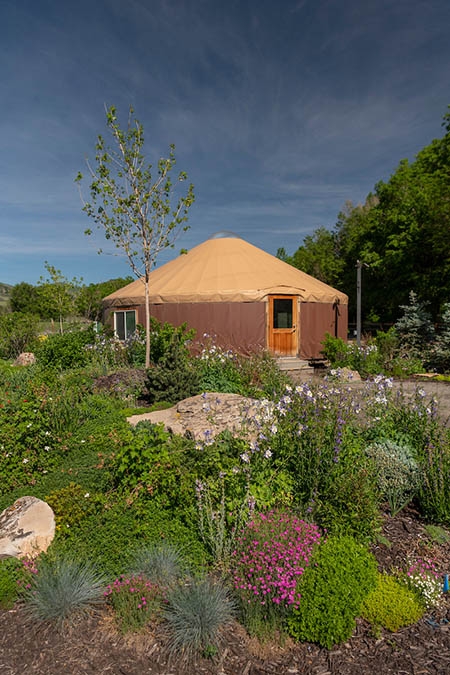Watering Home Landscapes
Conserving water is of great importance in the west. Despite an abundance of moisture last year, there will be droughts as the climate warms and becomes more arid. Water in the west is complex; it’s required by many yet is too scarce to sustain how it is being used. I encourage everyone to involve themselves with the issues of water in the west.
While policy, distribution, and use of water is complicated, there are simple things that we can do to save water at home. Water is saved through low flow faucets and newer household appliances, but on average over half of our water is used in landscapes. I build, maintain, and schedule the irrigation for turf and gardens at Chatfield Farms meeting requirements for healthy and useful landscapes and using as little water as possible.
An abundance of good advice to conserve water in our home landscapes exists, and there’s also nuances.
Removing turf and replacing with xeriscapes is a good idea. Xeriscapes use less water than the standard lawns while adding other functions to the space. Planting a deciduous fruit-bearing tree that uses less water can provide us and other creatures with food and habitat, and it can increase our homes efficiency by shading the south wall in the summer and allowing heat absorption in the winter. Alternatively, a zero-scape generally replaces water intensive turf or gardens with rock which will save water and provide nothing else.
Use drip instead of overhead when it makes sense. Drip gets water into the ground without loss to evaporation or runoff, perfect for a shrub border or vegetable garden. It’s also limited by the area it can cover, dynamic landscapes, and long run-times.
Efficient overhead irrigation gives us options, but frequently it’s inefficiently scheduled and maintained. Audit overhead systems to make schedules, use wind resistant rotors and rotary stream nozzles, ‘cycle-soak’ to reduce runoff, and water overnight to reduce evaporation.
Smart controllers conveniently manage changing conditions. These controllers manage irrigation based on the irrigation system and weather predictions. Because weather is difficult to predict, sensors can help to save water. Most importantly, rain catchments and anemometers measure, delay, and shut down irrigation during rain or wind events.
Landscapes perform an unending list of services for us and our ecosystem. We should look at the functions of our landscapes to determine if they are as valuable as the water they require, and then we should make sure that we deliver water as efficiently as possible.

This garden in front of the yurt at Chatfield Farms offers a display of native plants for a beautiful low-water landscape.
Add new comment